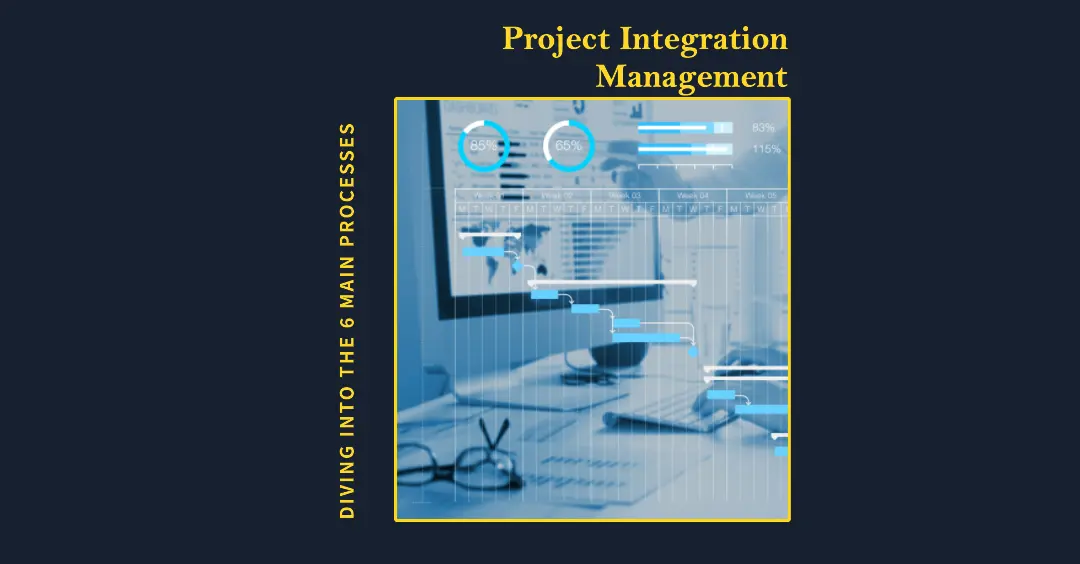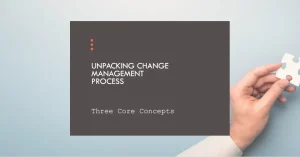I Introduction
Hey there, project management enthusiasts! As we all know, a successful project isn’t just about completing tasks on time and within budget; it’s about seamlessly integrating all aspects of the project to ensure a smooth and efficient workflow. That’s where project integration management comes in, and today, we’ll be diving into the six main processes that make up this essential project management discipline.
Project integration management is the glue that holds your project together. It involves coordinating and synchronizing various processes, resources, and stakeholders to achieve a common goal. When done right, it can significantly enhance project performance, reduce risks, and lead to more satisfied stakeholders. Trust me, folks, it’s a game-changer!
So, without further ado, let’s explore the six main processes of project integration management. We’ll discuss what each process entails and provide you with some handy tips and best practices to ace your project management game. Get ready to become a project integration management pro!
II Process 1: Develop Project Charter
Alright, let’s start our journey with the first process: developing the project charter. Think of the project charter as your project’s North Star – it guides the team by defining the project’s vision, objectives, and the key stakeholders involved. In a nutshell, it sets the foundation for your entire project.
Now, you may ask, “What are the key elements of a project charter?” Great question! Here are some crucial components to include:
- Project purpose and justification: Clearly articulate why the project is being undertaken and how it aligns with your organization’s strategic goals.
- Measurable project objectives: Define specific, measurable, achievable, relevant, and time-bound (SMART) objectives to keep your team focused and aligned.
- High-level project requirements: Outline the primary requirements and deliverables to set expectations right from the get-go.
- Project boundaries: Set the scope of the project, including any limitations or exclusions, to avoid scope creep (a notorious project management villain!).
- Key stakeholders: Identify the major players involved in the project – from sponsors to team members – and define their roles and responsibilities.
So, how can we create a stellar project charter? Here are a few tips and best practices to keep in mind:
- Collaborate with key stakeholders: Engage relevant stakeholders in the charter development process to ensure buy-in, alignment, and a shared understanding of the project.
- Keep it concise and clear: A project charter should be brief and easy to understand. Use clear language and avoid jargon to ensure everyone’s on the same page.
- Make it flexible: Remember that projects often evolve over time, so design your charter with some room for flexibility to accommodate potential changes.
- Obtain formal approval: Get your project charter signed off by the project sponsor or other key stakeholders to solidify their commitment and support.
By crafting a strong project charter, you’ll be well on your way to project integration management success. Next up, let’s dive into the process of developing a project management plan!
III Process 2: Develop Project Management Plan
With a solid project charter in place, it’s time to roll up our sleeves and dive into developing the project management plan. This comprehensive document serves as your project’s roadmap, outlining everything from scope and schedule to budget and stakeholder management. It’s your go-to resource for guiding your team through the various phases of the project.
Here are the key components that make up a well-rounded project management plan:
- Scope management plan: Define the project scope, including work breakdown structure (WBS) and any exclusions, to keep your team on track and avoid scope creep.
- Schedule management plan: Establish a timeline with milestones, deadlines, and dependencies to ensure your project stays on schedule.
- Cost management plan: Develop a budget, including cost estimates and contingencies, to keep your project’s finances in check.
- Quality management plan: Set quality standards and define how your team will measure and ensure the project’s quality.
- Resource management plan: Identify the human and material resources needed for the project, and outline how they’ll be acquired, managed, and released.
- Risk management plan: Assess potential risks, and establish strategies for mitigating or responding to them.
- Stakeholder management plan: Identify stakeholders, their needs, and the communication strategies to keep them engaged and informed.
Now that you know what goes into a project management plan, here are some tips and best practices for developing one that really shines:
- Involve your team: Encourage collaboration and input from your project team members when creating the plan to ensure a well-rounded and realistic approach.
- Break it down: Dividing your plan into smaller, manageable sections helps make it more digestible and easier to update as needed.
- Stay adaptable: Projects evolve, so be prepared to revise and update your plan as new information or changes arise. Flexibility is key!
- Communicate and share: Ensure your project management plan is accessible to all team members, and regularly discuss its progress and updates during team meetings.
With a robust project management plan in your arsenal, you’ll be well-equipped to navigate the twists and turns of your project journey. Up next, we’ll explore how to direct and manage project work effectively. Stay tuned, project management rockstars!
IV Process 3: Direct and Manage Project Work
So, you’ve got your project charter and management plan all set. What’s next? It’s time to put the pedal to the metal and dive into the nitty-gritty of directing and managing project work. This process is all about leading your team, making informed decisions, and executing tasks to bring your project to life.
Here are some key activities involved in directing and managing project work:
- Task assignment: Allocate tasks to team members based on their skills, expertise, and workload to ensure efficiency and effectiveness.
- Decision-making: Make informed decisions that align with your project goals and objectives, taking into consideration your team’s input, constraints, and risks.
- Issue resolution: Address and resolve any issues that may arise during the project, whether they’re related to resources, scope, schedule, or anything in between.
- Progress monitoring: Keep a close eye on your project’s progress, comparing actual performance to your project management plan to identify deviations and make necessary adjustments.
Now, let’s dive into some tips and best practices for managing project work like a pro:
- Empower your team: Trust your team members, delegate responsibilities, and give them the autonomy to make decisions within their scope of work. This fosters a sense of ownership and motivation.
- Communicate effectively: Establish clear channels of communication and encourage open dialogue to ensure everyone stays informed and connected.
- Be proactive: Anticipate potential issues or roadblocks and take action before they escalate, saving your project from unexpected setbacks.
- Celebrate small wins: Recognize and celebrate your team’s accomplishments along the way, even if they’re small milestones. This boosts morale and keeps everyone engaged.
By mastering the art of directing and managing project work, you’ll not only keep your project on track but also create a positive and thriving environment for your team. Next, we’ll discuss the importance of monitoring and controlling project work, so stay tuned!
V Process 4: Monitor and Control Project Work
As we venture further into our project management journey, let’s talk about the crucial process of monitoring and controlling project work. You might think of this as your project’s “quality control” – it’s all about keeping a close eye on your project’s performance and making necessary adjustments to ensure it stays on track and meets your objectives.
One essential aspect of monitoring and controlling project work is the use of performance metrics and key performance indicators (KPIs). These measurable values help you gauge how well your project is progressing and whether you’re achieving your goals.
Here are some tips and best practices for efficient project monitoring and control:
- Establish clear metrics and KPIs: Work with your team to identify relevant and meaningful metrics that reflect your project’s objectives and performance.
- Regularly review progress: Schedule consistent progress reviews to analyze your project’s performance against the established metrics and KPIs. This helps you identify deviations and make timely adjustments.
- Involve your team: Encourage team members to participate in progress reviews and share their insights. This not only keeps everyone in the loop but also fosters a sense of accountability and shared responsibility.
- Implement corrective actions: When deviations occur, promptly address them with corrective actions, such as adjusting resources, revising schedules, or modifying processes. This keeps your project on track and helps avoid larger issues down the road.
By closely monitoring and controlling your project work, you’ll be better equipped to identify and address potential challenges, ensuring a smoother and more successful project journey. Next up, we’ll tackle the vital process of integrated change control, so don’t go anywhere!
VI Process 5: Perform Integrated Change Control
We all know change is inevitable, especially in the dynamic world of project management. That’s where the process of integrated change control comes into play. This essential step is all about managing and controlling changes to your project’s scope, schedule, budget, or any other aspect that could impact its performance or outcome.
So, why is change control so important? Well, without a structured process in place, changes can quickly spiral out of control, leading to scope creep, budget overruns, and missed deadlines. Yikes!
To keep your project on track, follow these tips and best practices for managing integrated change control:
- Establish a clear change control process: Define a process for identifying, evaluating, approving, and implementing changes. This should include a change request form, a designated change control board (CCB), and a method for tracking and documenting changes.
- Assess the impact: Before approving a change, carefully analyze its potential impact on the project’s scope, schedule, budget, and quality. This helps you make informed decisions and minimizes any negative consequences.
- Communicate changes effectively: Ensure all team members and stakeholders are aware of approved changes and their implications. Open and transparent communication is crucial to maintaining alignment and avoiding confusion.
- Monitor and review changes: After implementing a change, monitor its impact on the project and review the results to ensure it achieves the desired outcome. This helps you learn from the process and make more effective decisions in the future.
By effectively managing integrated change control, you’ll be able to navigate the ever-changing landscape of your project while keeping it on track and in line with your objectives. Next up, we’ll discuss the final process of closing a project or phase, so stick around for the grand finale!
VII Process 6: Close Project or Phase
We’ve made it, folks! The last stop on our project integration management journey is the process of closing a project or phase. This crucial step involves wrapping up all the loose ends, documenting lessons learned, and celebrating your team’s hard work and accomplishments. It’s the grand finale that ensures a successful, well-rounded project experience.
Here are the key activities and considerations during project or phase closure:
- Verify completion: Ensure all project deliverables have been met, and confirm that the final product or service meets the requirements and expectations of your stakeholders.
- Conduct a project review: Gather your team and stakeholders to discuss the project’s successes, challenges, and lessons learned. This invaluable information can be applied to future projects for continuous improvement.
- Update documentation: Finalize and archive all project documentation, including contracts, reports, and plans, to maintain a comprehensive record for future reference.
- Release resources: As the project comes to a close, release team members and other resources, allowing them to move on to new assignments or projects.
- Celebrate and acknowledge success: Recognize and celebrate your team’s achievements, and express your gratitude for their hard work and dedication.
Now, let’s go over some tips and best practices for a successful project or phase closure:
- Don’t rush the process: Take the time to thoroughly review and complete all closing activities, ensuring nothing falls through the cracks.
- Be objective: Approach the project review with an open mind, considering both the successes and areas for improvement. This helps create a balanced perspective and promotes growth.
- Share the lessons learned: Disseminate the insights gained from your project review with other teams and departments within your organization, contributing to a culture of continuous improvement.
- Show your appreciation: A heartfelt thank-you goes a long way. Show your gratitude to your team and stakeholders by acknowledging their efforts and celebrating their accomplishments.
And there you have it! By successfully navigating the six main processes of project integration management, you’ll be well on your way to achieving project success and becoming a true project management superstar. So, go forth and conquer your projects with confidence and finesse!
VIII Conclusion
Well, fellow project management aficionados, we’ve reached the end of our deep dive into the six main processes of project integration management. I hope this journey has been as enlightening and enjoyable for you as it has been for me! By now, you should have a solid understanding of the importance of project integration management and how it can make a world of difference in your projects’ success.
To recap, the six main processes of project integration management are:
- Develop Project Charter
- Develop Project Management Plan
- Direct and Manage Project Work
- Monitor and Control Project Work
- Perform Integrated Change Control
- Close Project or Phase
By mastering these processes and applying the tips and best practices we’ve discussed, you’ll be well-equipped to tackle any project that comes your way. Remember, the key to successful project integration management lies in effective communication, collaboration, and adaptability.
So, go ahead and put your newfound knowledge to the test – your future projects will thank you for it! And as always, never stop learning and growing in your project management journey. Here’s to your continued success, and happy integrating!
To find out how Artificial Intelligence is changing the Project Management landscape, you have enjoy reading this article https://www.shaunstoltz.com/did-artificial-intelligence-just-change-everything-about-project-management/
Find out more about Shaun Stoltz https://www.shaunstoltz.com/about/
This post was written by an AI and reviewed/edited by a human.



